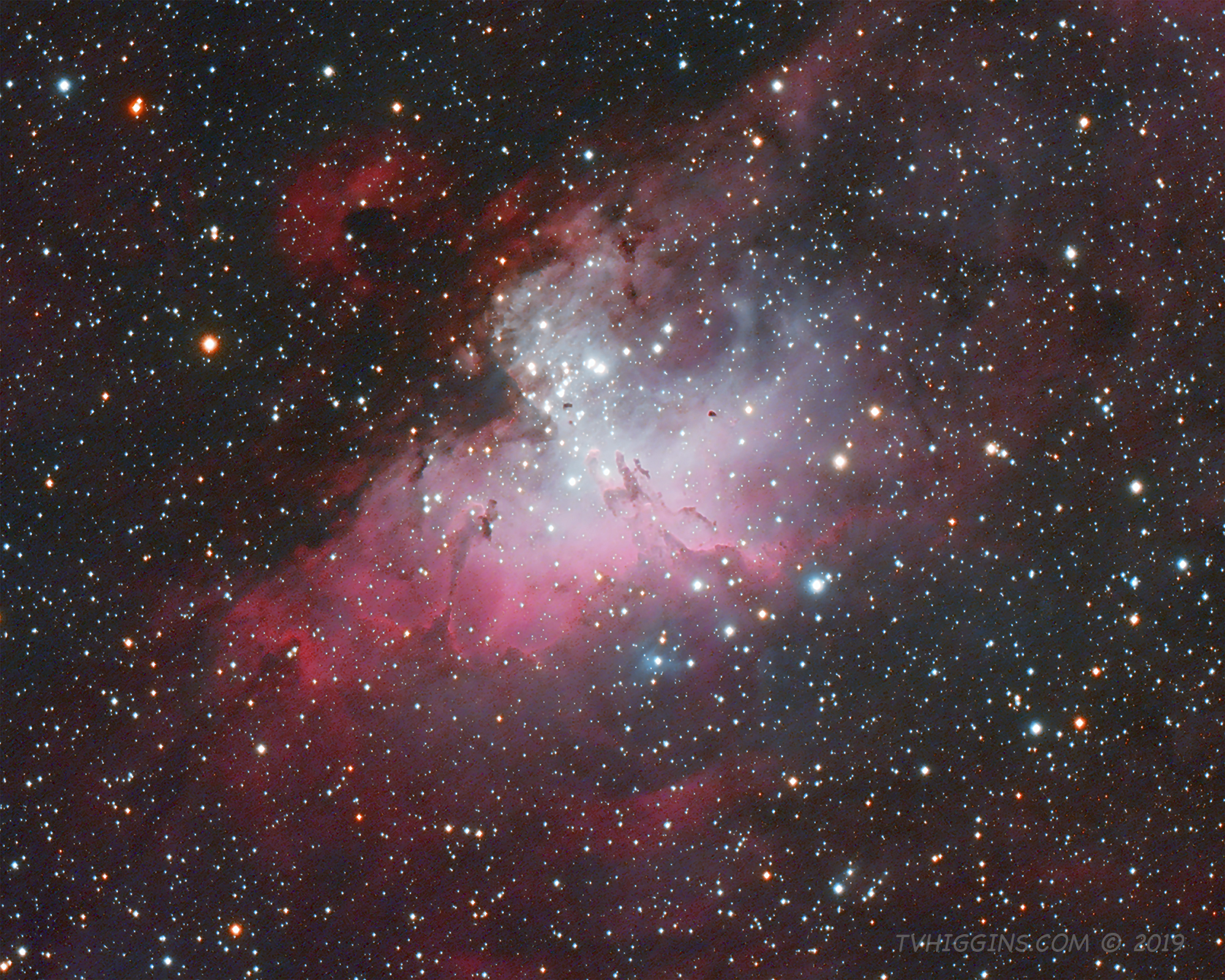The Eagle, Take Two

- Telescope: Stellarvue SVA130T-IS
- Mount: Losmandy G-11 with Gemini 2 controller
- Autoguiding: Yes
- Optical Configuration: 1x 910 mm (f/7)
- Camera: Canon 60Da
- Light Frames: 24, 300-s subframes stacked (120 min.)
- Calibration: None (no darks, no flats, no biases)
- Exposure Time(s): 2 h or 120 min. (24 x 5 min.)
- ISO: 800
- Pre-processing & Processing: PixInsight
- Post-Processing: Photoshop CC
- Imaging Location: Sierra Nevada Mountains (Altitude: 8,600 ft)
Reprocessing image data of the Eagle Nebula (M16) that was shot last year has yielded better detail and higher color accuracy.
Home to the famous “Pillars of Creation,” the Eagle Nebula in the constellation Serpens is a diffuse emission nebula about 7,000 light-years from us. The small dark region of gas and dust near the center of the nebula resembles the silhouette of an eagle, hence the name. This small area of the nebula also defines the so-called Pillars of Creation made famous by a composite high-resolution image taken with the Hubble Space Telescope.
The deep red color of the Eagle Nebula originates from light emitted by singly ionized hydrogen gas (H-alpha). The vast clouds of gas and dust in nebulae make them effective stellar nurseries, where the stuff of the universe is transformed into gleaming new stars.